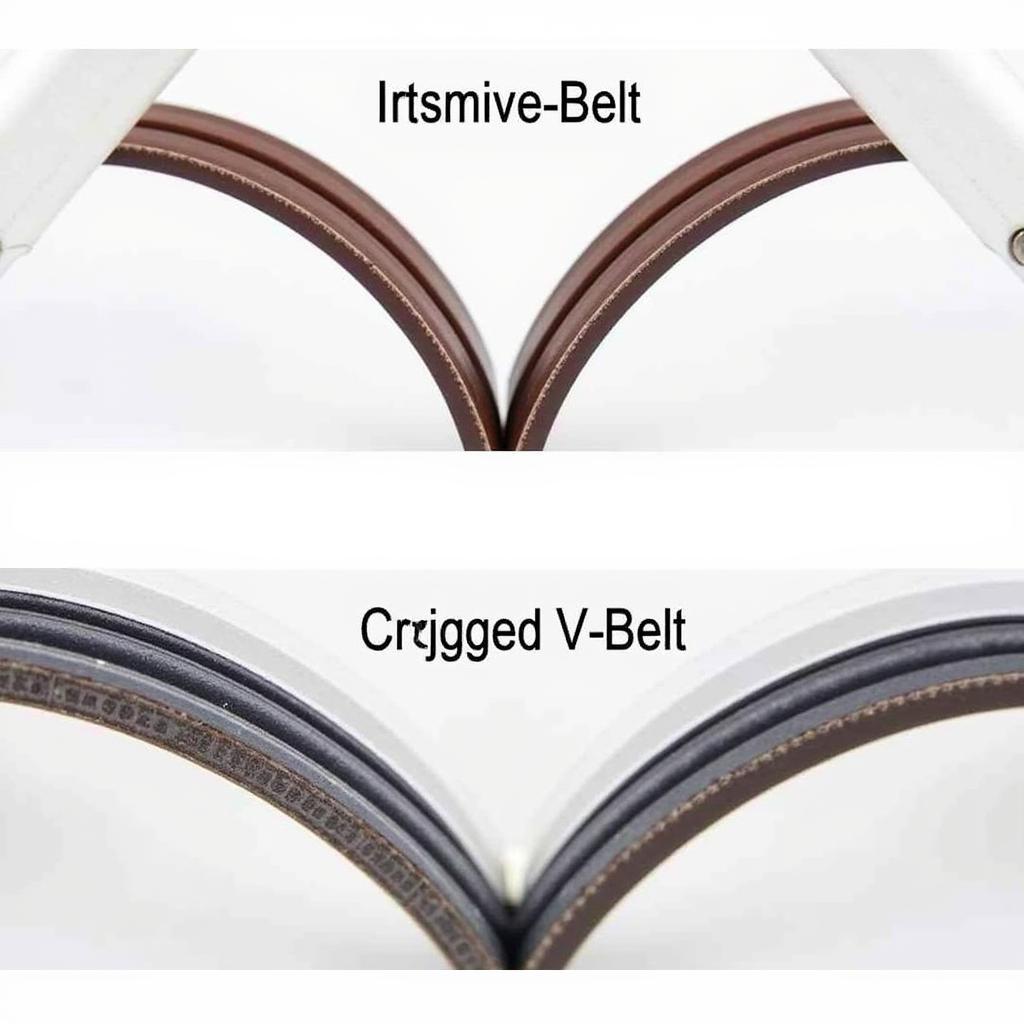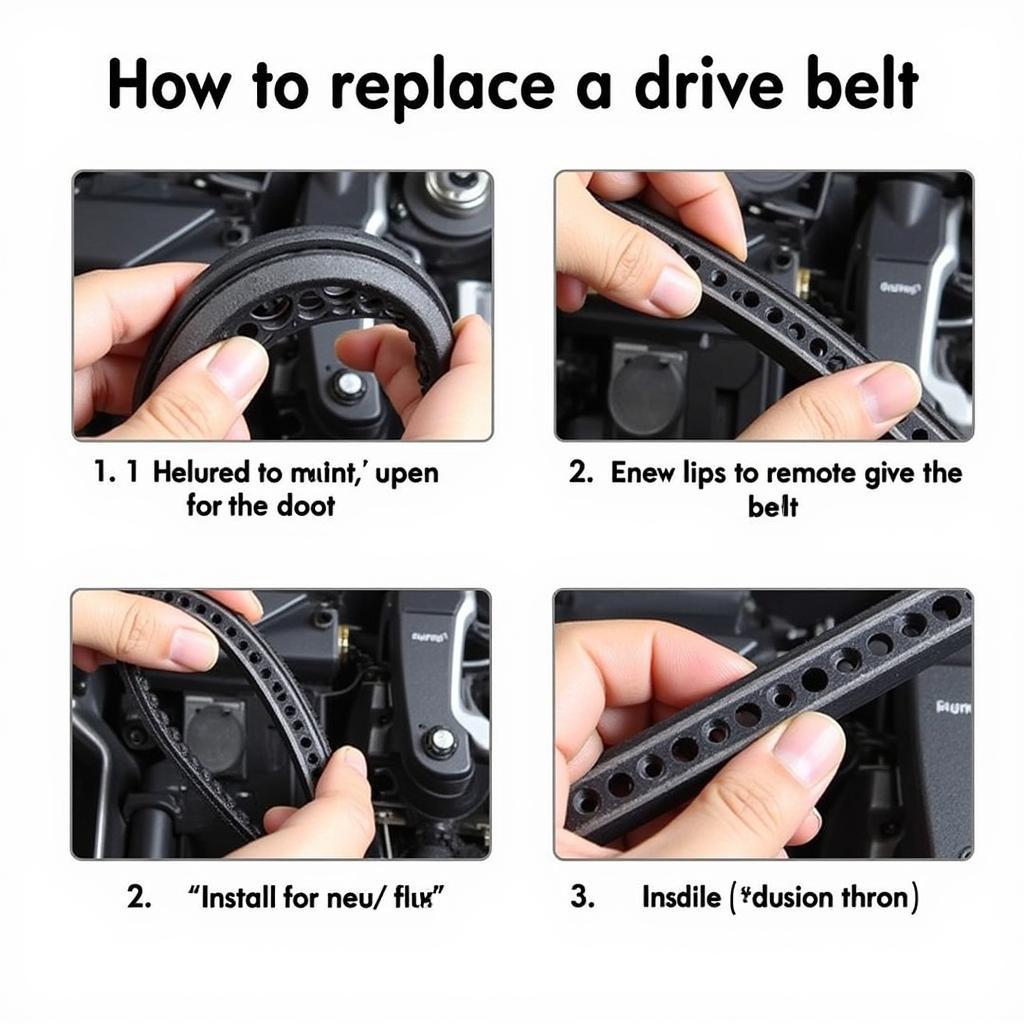A well-maintained drive belt is crucial for the smooth operation of your Troy-Bilt Horse tiller. This essential component transfers power from the engine to the tines, ensuring efficient tilling and optimal performance. Choosing the correct drive belt can be confusing, but this comprehensive guide is here to help you navigate the process with ease.
Understanding Your Troy-Bilt Horse Tiller and Drive Belt Needs
Before you delve into the world of drive belts, it’s essential to gather some key information about your Troy-Bilt Horse tiller:
- Model Number: This is perhaps the most crucial piece of information. The model number helps you identify the exact specifications of your tiller, including the correct drive belt size and type.
- Belt Type: Troy-Bilt Horse tillers typically use V-belts or cogged V-belts. Identifying the type your tiller requires is essential for compatibility.
- Belt Size: The belt size is crucial for proper fit and function. It is usually denoted by a combination of numbers and letters, such as 5/8″ x 42″.
You can usually find this information in your tiller’s owner’s manual or on a data plate located on the machine itself.
Deciphering Drive Belt Sizes and Types
Navigating the world of drive belts can feel like learning a new language. Here’s a breakdown to simplify things:
V-Belts: These are the most common type, characterized by their trapezoidal cross-section. They are known for their grip and ability to handle high speeds.
Cogged V-Belts: Also known as notched V-belts, these feature grooves on the underside. The cogs allow for greater flexibility, making them suitable for tight spaces and reducing heat buildup.
Belt Size: The size is denoted by the belt’s width and length. The width is the distance across the top of the belt, while the length refers to the belt’s circumference.
 Different Types of Troy-Bilt Horse Tiller Drive Belts
Different Types of Troy-Bilt Horse Tiller Drive Belts
Common Signs of a Worn Drive Belt
Knowing when to replace your drive belt is crucial for preventing unexpected breakdowns and potential damage to your tiller. Keep an eye out for these telltale signs:
- Slipping Belt: If you notice a burning rubber smell or hear squealing sounds, especially under load, it could indicate a slipping belt.
- Visible Wear and Tear: Cracks, fraying, or glazing on the belt’s surface are clear indicators of wear and tear.
- Reduced Tilling Performance: A worn-out belt can’t transfer power efficiently, leading to decreased tilling depth and overall performance.
Choosing the Right Drive Belt: Factors to Consider
Selecting the right drive belt for your Troy-Bilt Horse tiller isn’t just about finding the correct size; other factors come into play:
- Belt Material: Belts are made from various materials, each offering different levels of durability, heat resistance, and flexibility.
- Brand Reputation: Opting for reputable brands known for quality and performance can save you headaches in the long run.
- Price: While it’s tempting to go for the cheapest option, investing in a quality drive belt is crucial for ensuring longevity and optimal tiller performance.
Installing Your New Drive Belt: A Step-by-Step Guide
Replacing a drive belt might seem daunting, but it’s a manageable task with the right guidance. Always consult your owner’s manual for model-specific instructions, but here’s a general overview:
- Safety First: Disconnect the spark plug wire to prevent accidental starting.
- Locate the Drive Belt: The drive belt is usually housed beneath a belt cover. Consult your manual for its exact location.
- Remove the Old Belt: Carefully remove the old belt, noting its routing path for reference.
- Install the New Belt: Thread the new belt following the same path as the old one, ensuring proper alignment with the pulleys.
- Adjust Belt Tension: The belt should have a slight deflection when pressed. Refer to your manual for the correct tension specifications.
- Reassemble and Test: Replace the belt cover and reconnect the spark plug wire. Start the engine and check for proper belt operation.
 Installing a New Drive Belt on a Troy-Bilt Horse Tiller
Installing a New Drive Belt on a Troy-Bilt Horse Tiller
Expert Insights on Drive Belt Maintenance
We spoke to John Miller, a seasoned mechanic with over 20 years of experience working on Troy-Bilt equipment, and he shared this valuable tip: “Regular inspection and cleaning of your drive belt can significantly extend its lifespan. Debris and dirt can cause premature wear, so make it a habit to check and clean the belt regularly.”
Maintaining the correct belt tension is also crucial, according to John. “A loose belt can slip and reduce tilling efficiency, while an overly tight belt can put unnecessary strain on the engine and bearings.”
FAQs: Addressing Common Drive Belt Concerns
Q: Can I use a standard V-belt instead of a cogged V-belt on my Troy-Bilt Horse tiller?
A: While it might seem interchangeable, using the correct belt type specified for your model is crucial. Using the wrong type can lead to premature wear, slippage, and potential damage.
Q: How often should I replace my drive belt?
A: There’s no one-size-fits-all answer. Inspect your belt regularly and replace it at the first sign of wear or every 100 hours of use, whichever comes first.
Q: Where can I find the correct drive belt for my vintage Troy-Bilt Horse tiller?
A: For older models, check with authorized dealers, online retailers specializing in vintage parts, or consider contacting Troy-Bilt directly.
Beyond Drive Belts: Explore Our Resources for All Your Troy-Bilt Horse Tiller Needs
For more information about maintaining your Troy-Bilt Horse tiller, including troubleshooting tips and access to genuine parts, be sure to explore our comprehensive resources:
Keep Your Troy-Bilt Horse Tiller Running Smoothly
By understanding the importance of a drive belt and following these guidelines, you can keep your Troy-Bilt Horse tiller operating at its best for years to come. Remember, a well-maintained tiller makes for a happy gardener!
Need further assistance with your Troy-Bilt Horse tiller? Our dedicated customer support team is here to help. Contact us at Phone Number: 0772127271, Email: [email protected] or visit us at Address: QGM2+WX2, Vị Trung, Vị Thuỷ, Hậu Giang, Việt Nam. We provide 24/7 customer service to ensure your tilling needs are always met.